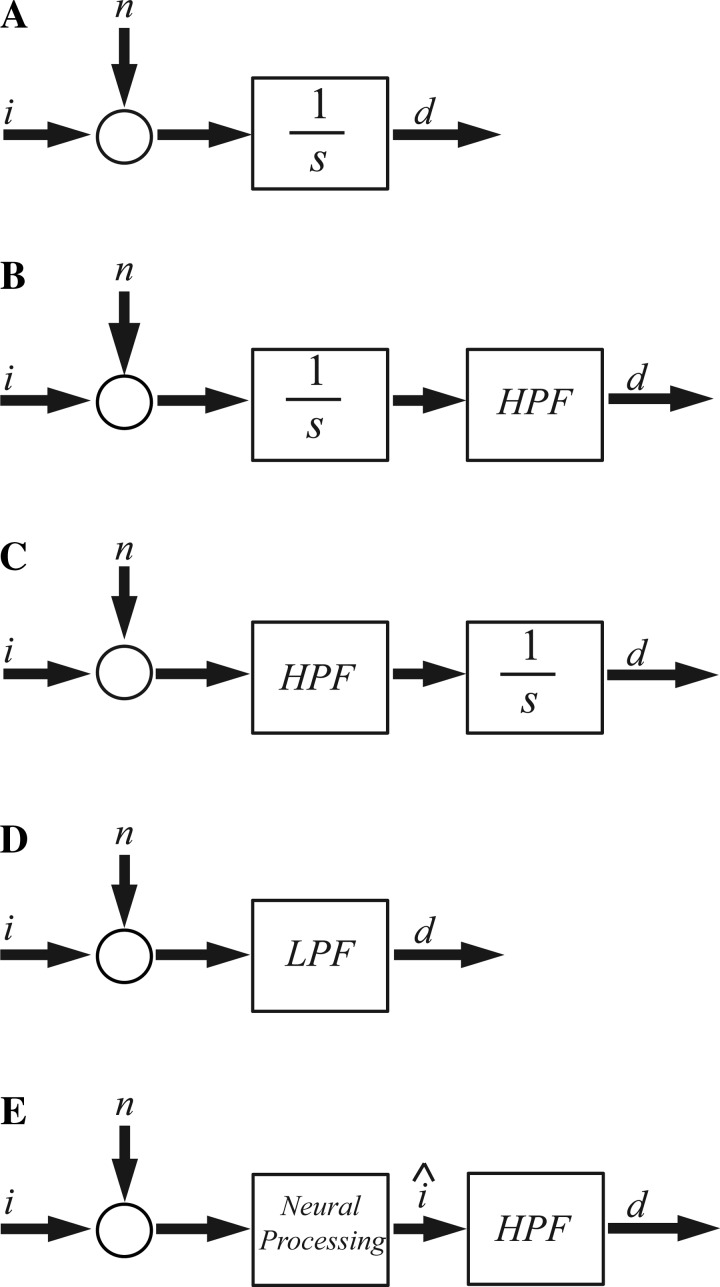Fig. 6.
Evidence accumulation models. A: standard evidence accumulation is represented by a simple integration of noisy information, represented in the diagram as the sum of noise (n) and information (i). The output is the decision variable (d). As noted in the text, such integration might provide optimal processing for information sources that begin abruptly. B: if an HPF contributes to decision making, it would filter the accumulated evidence. C: alternatively, information could be accumulated following high-pass filtering. D: an LPF can represent the processes shown in B and C, because, as presented earlier, integration combined with high-pass filtering, in either order, is equivalent to low-pass filtering. Stated explicitly, from an input-output perspective, B, C, and D are identical. E: when information is continually processed optimally, integration of such information is suboptimal under many conditions, because integration of optimally processed information yields suboptimal processing. More generally, the continual processing shown in E could also represent the integration included in A–D, since integration is a form of continual processing that is particularly pertinent when a transient information source is turned on.

